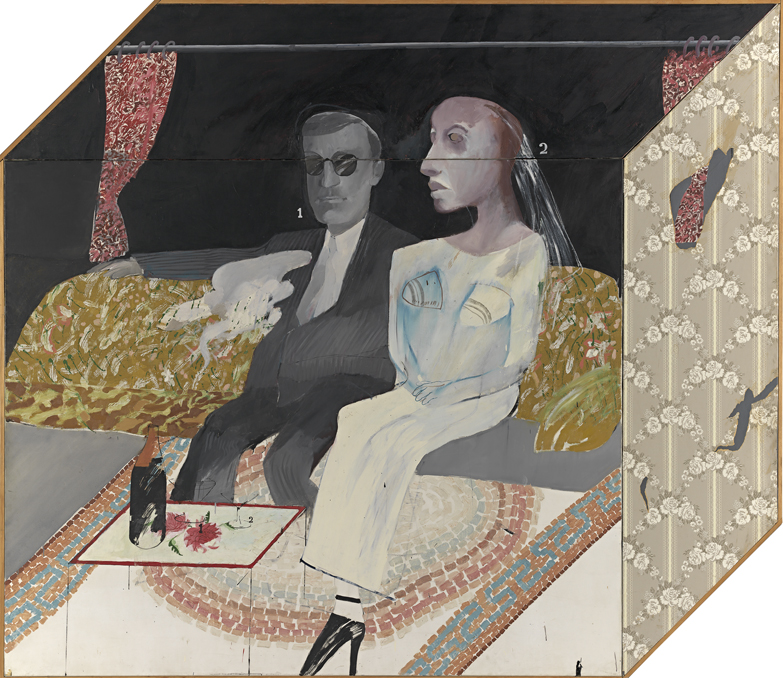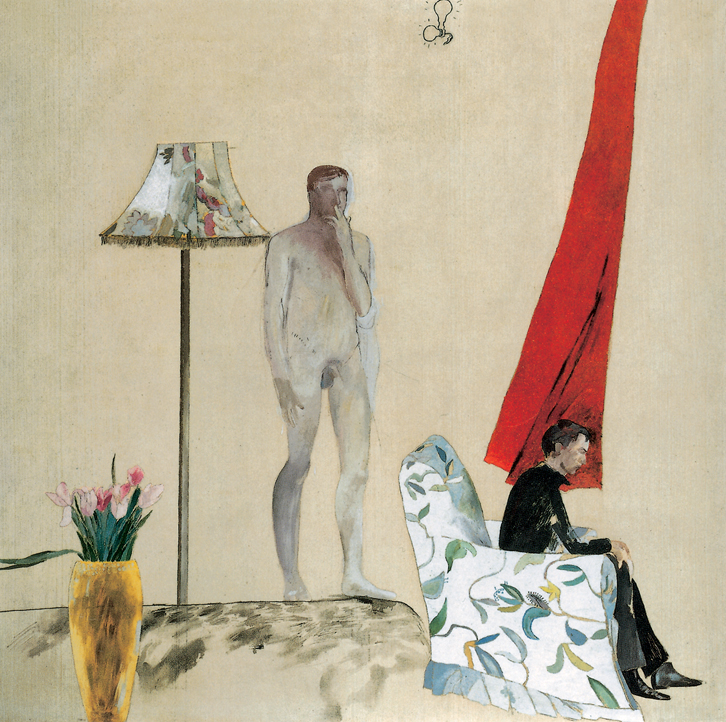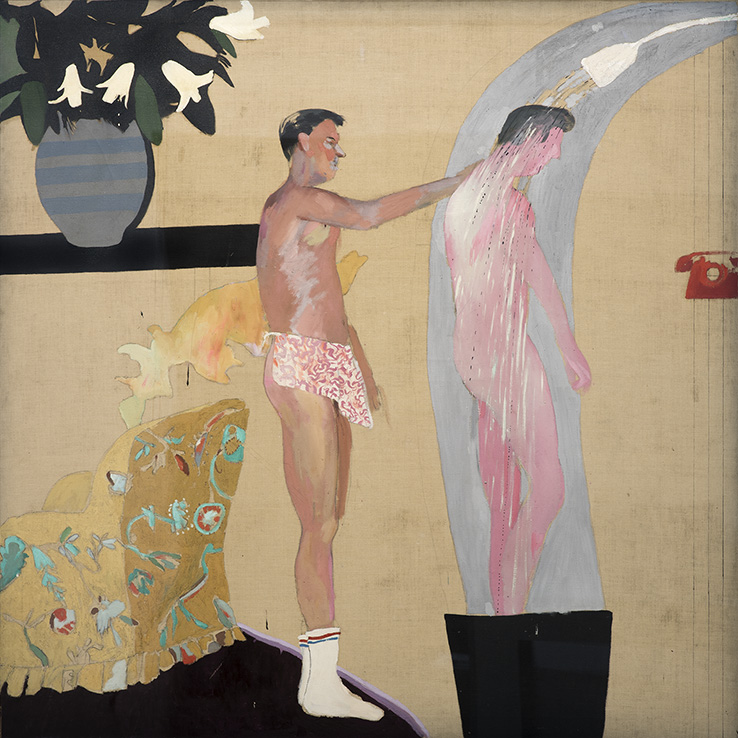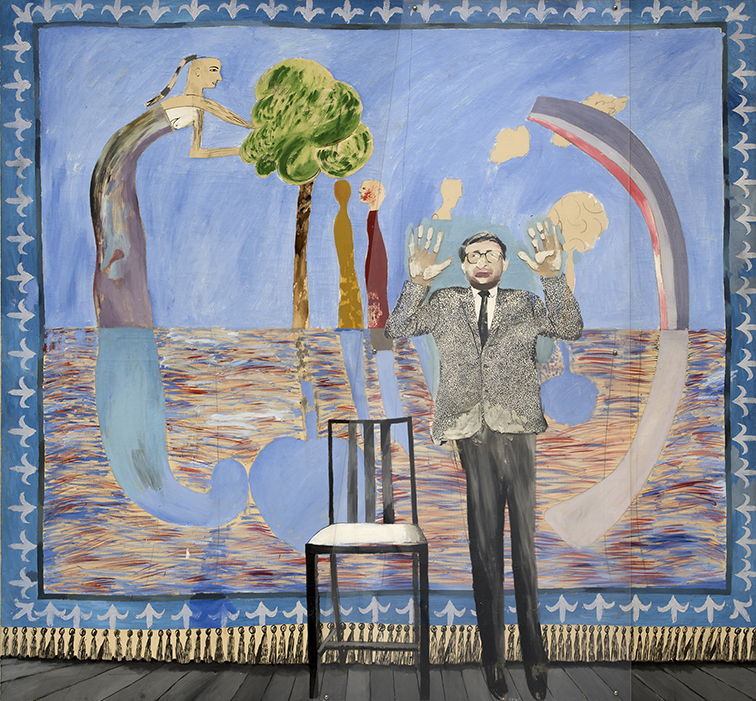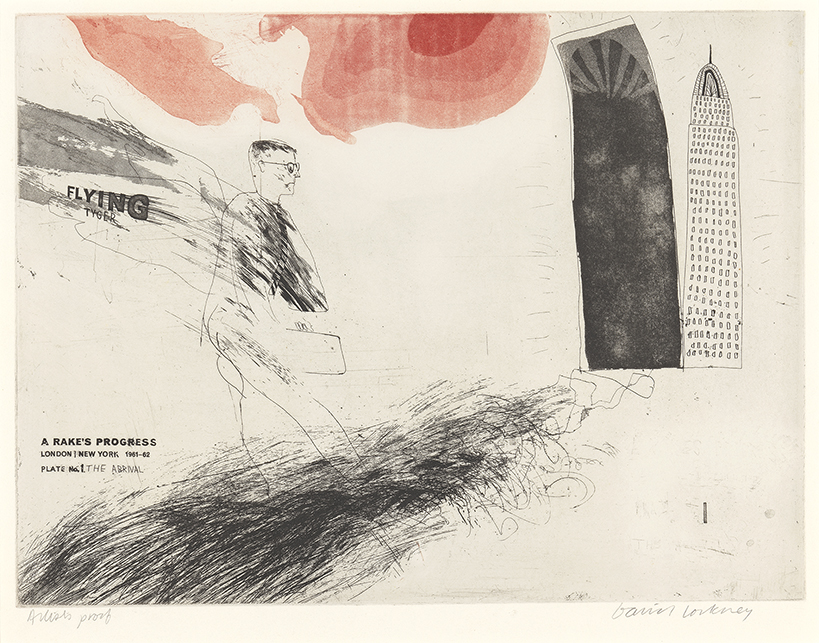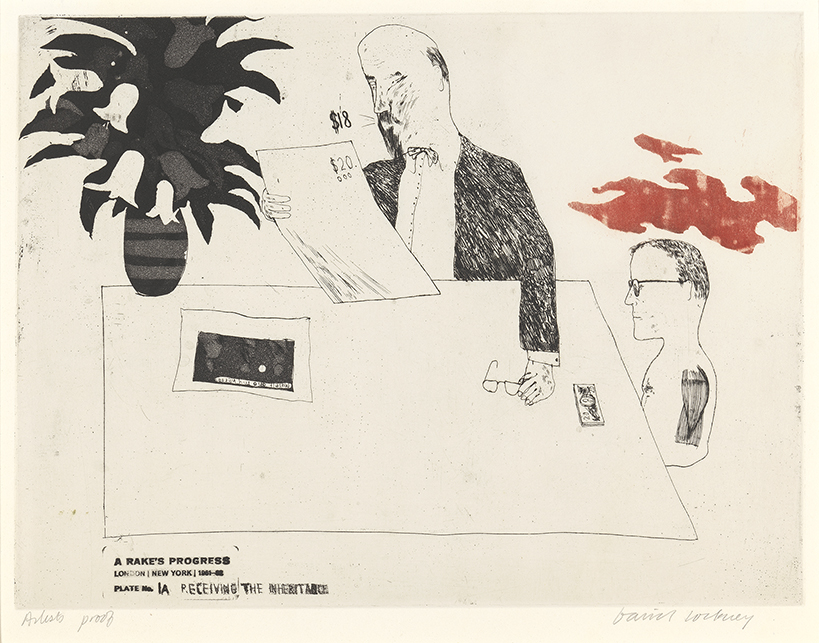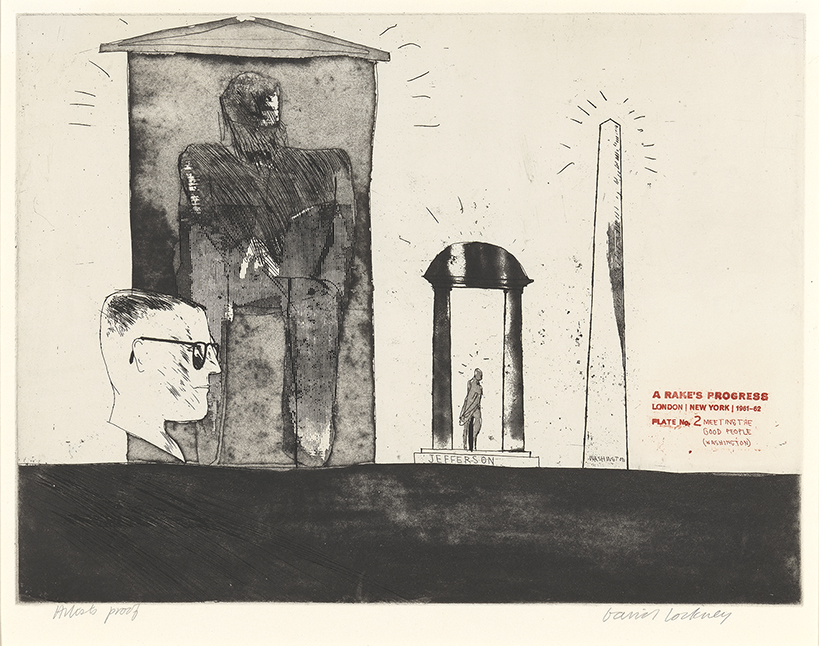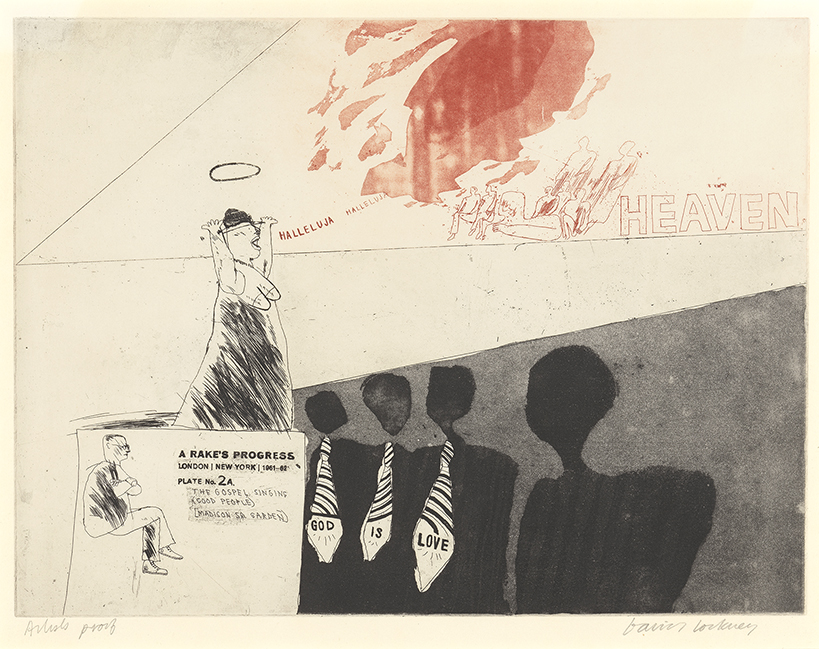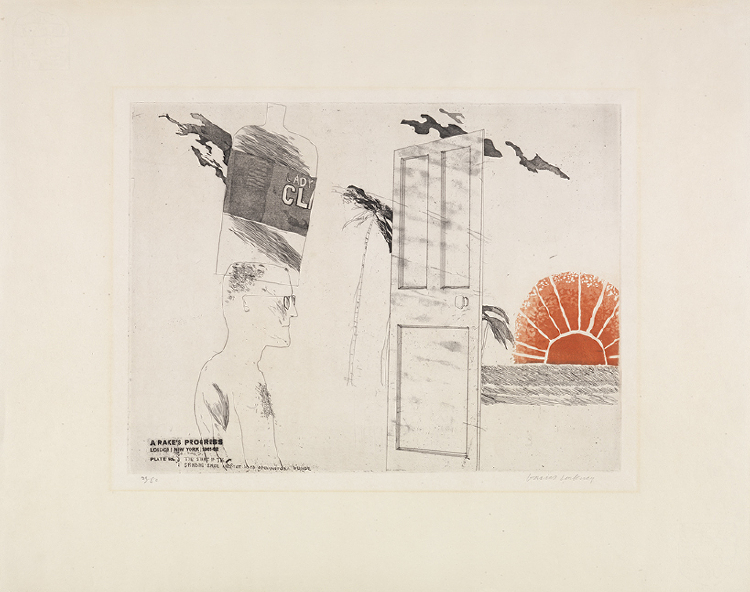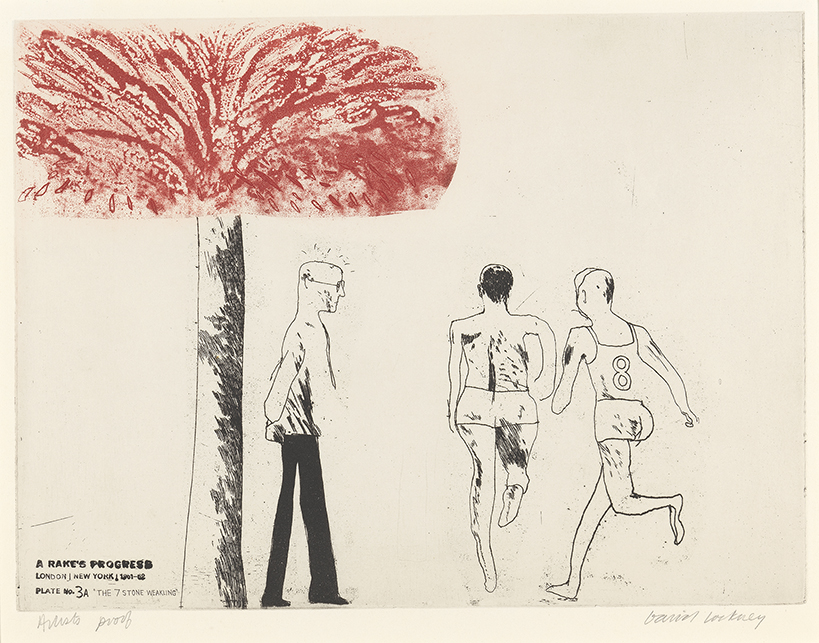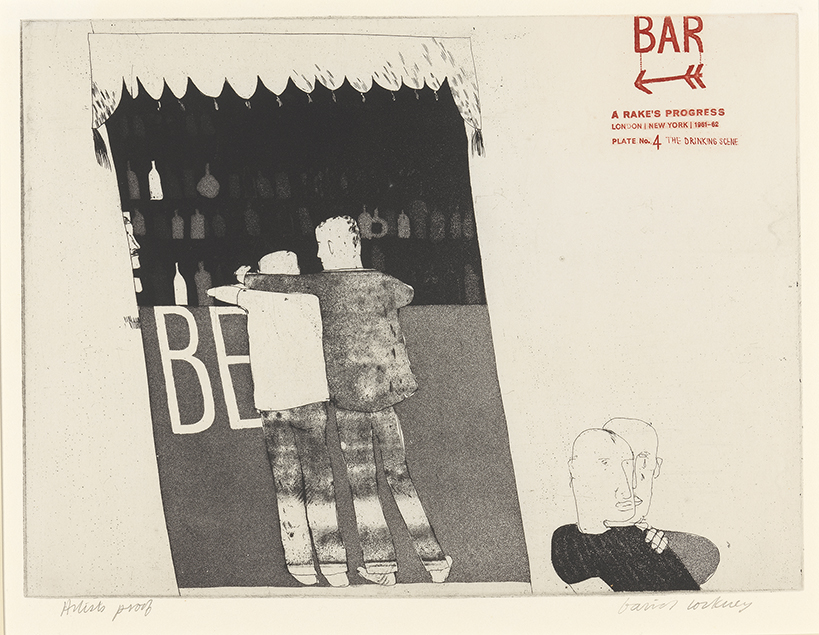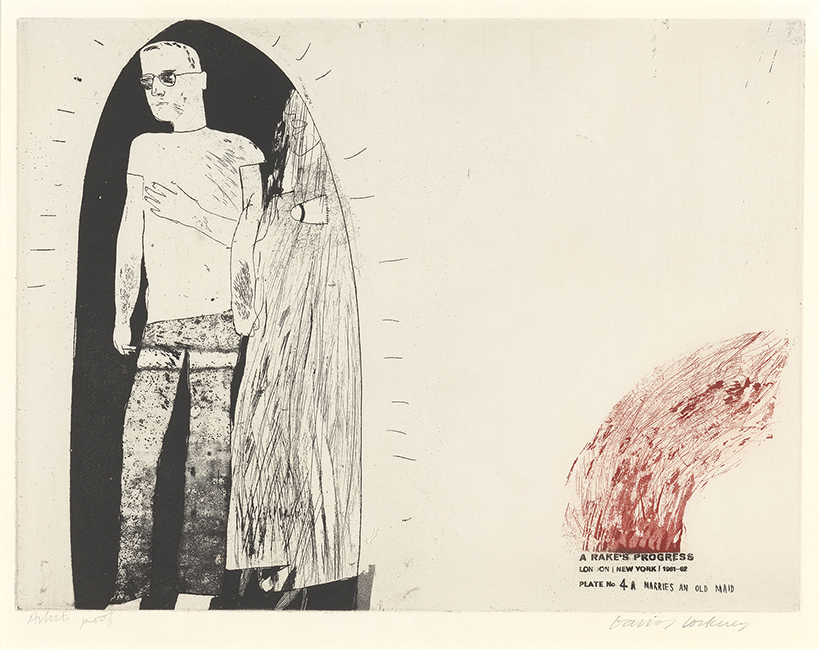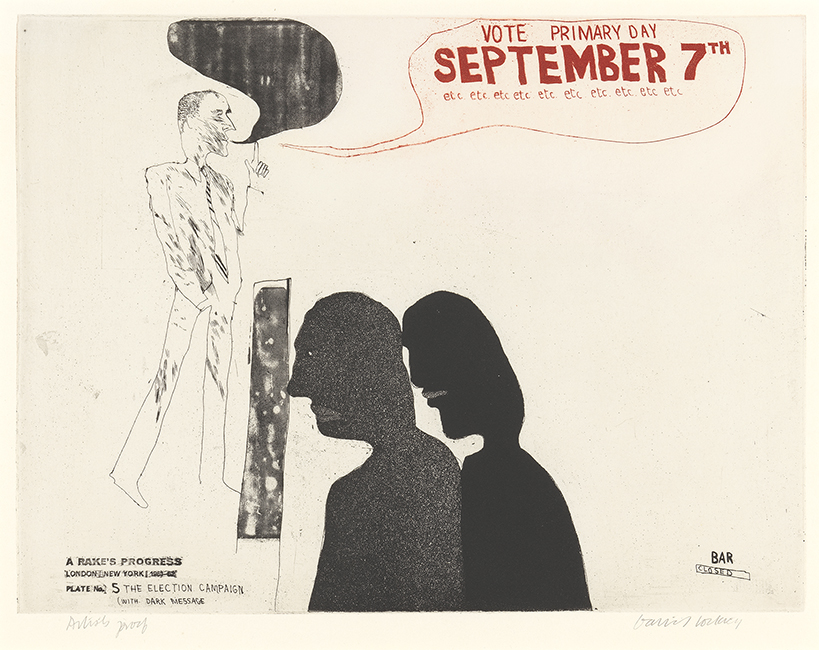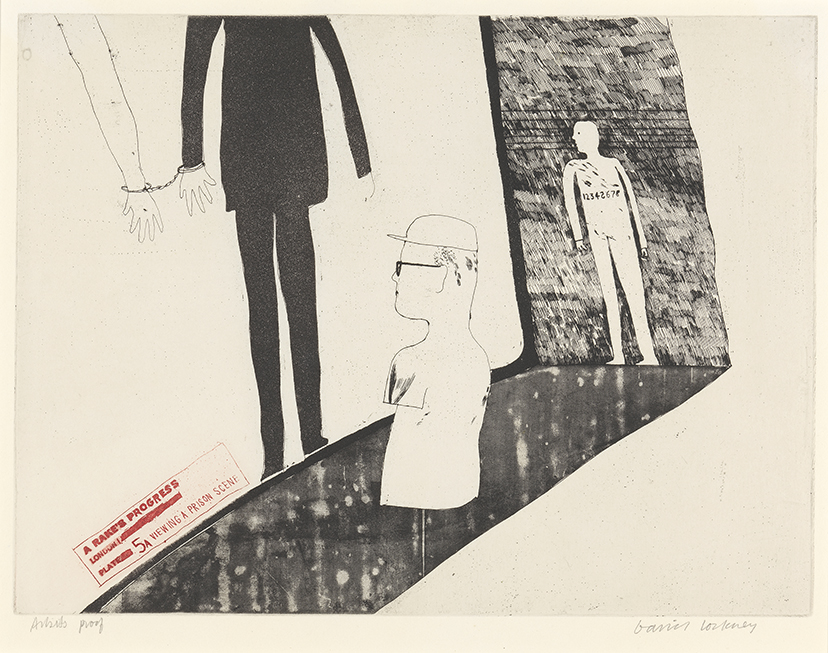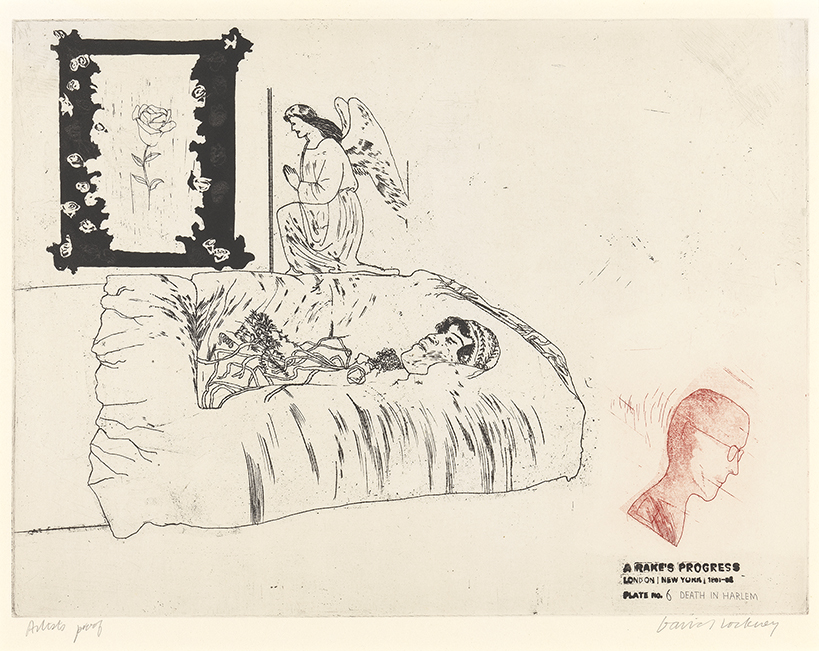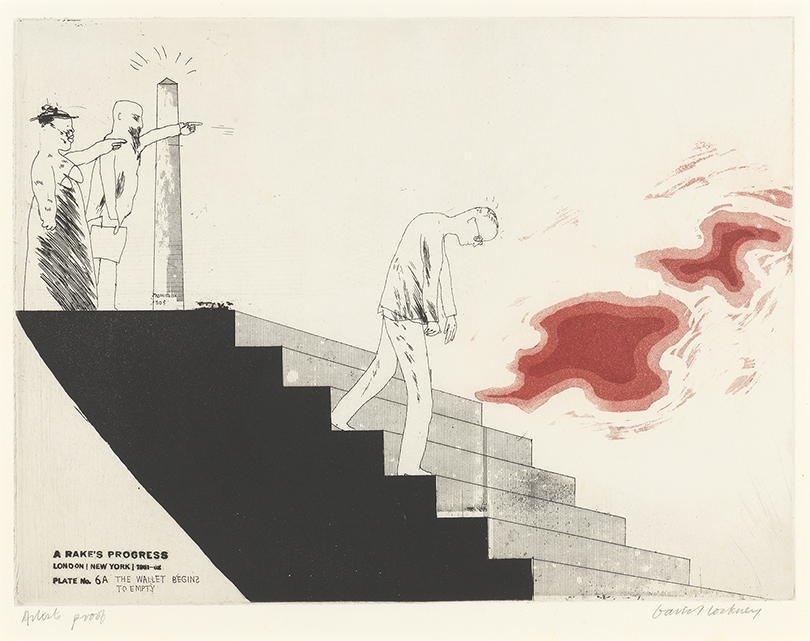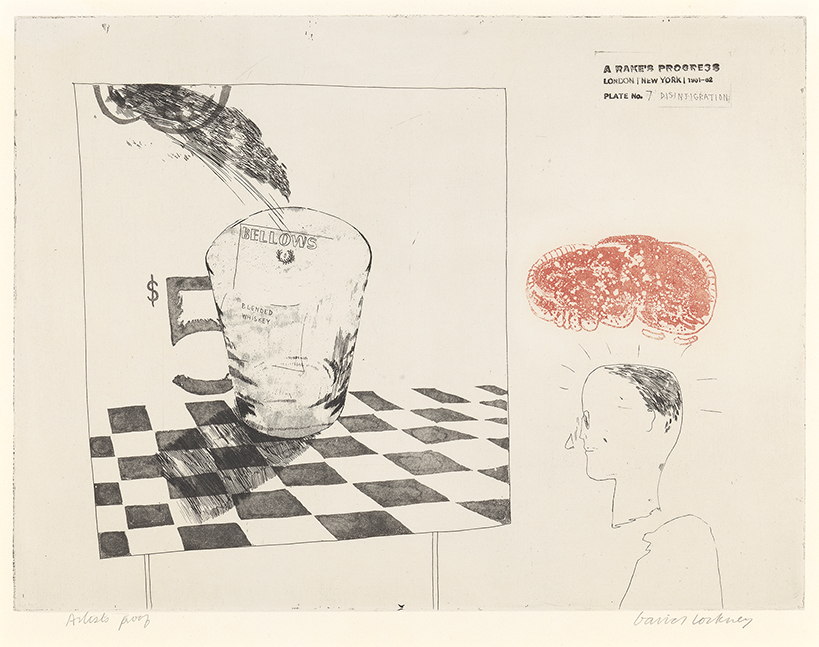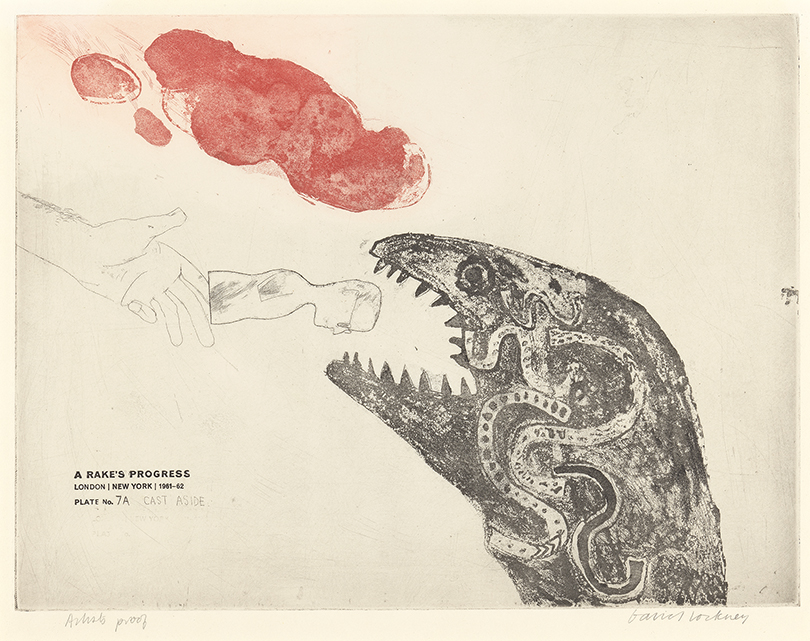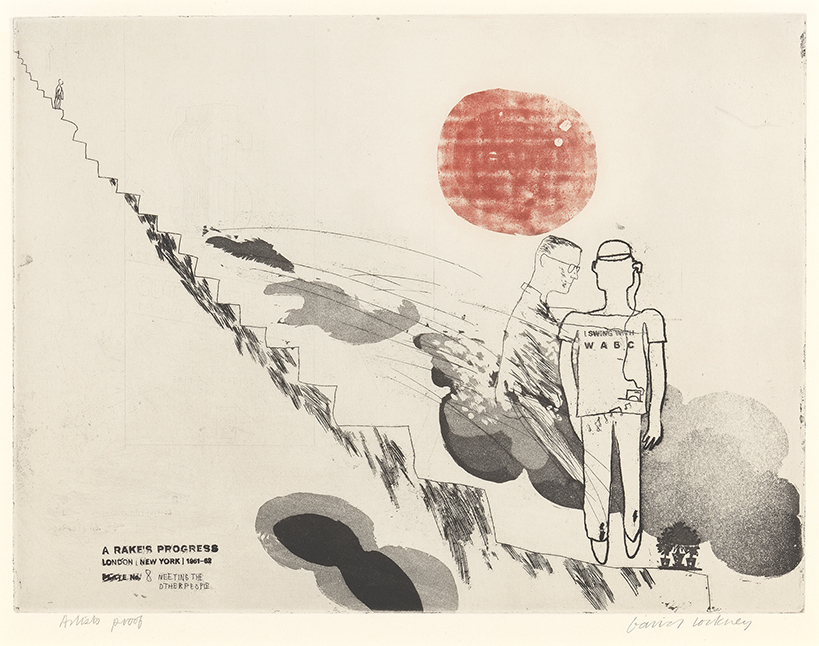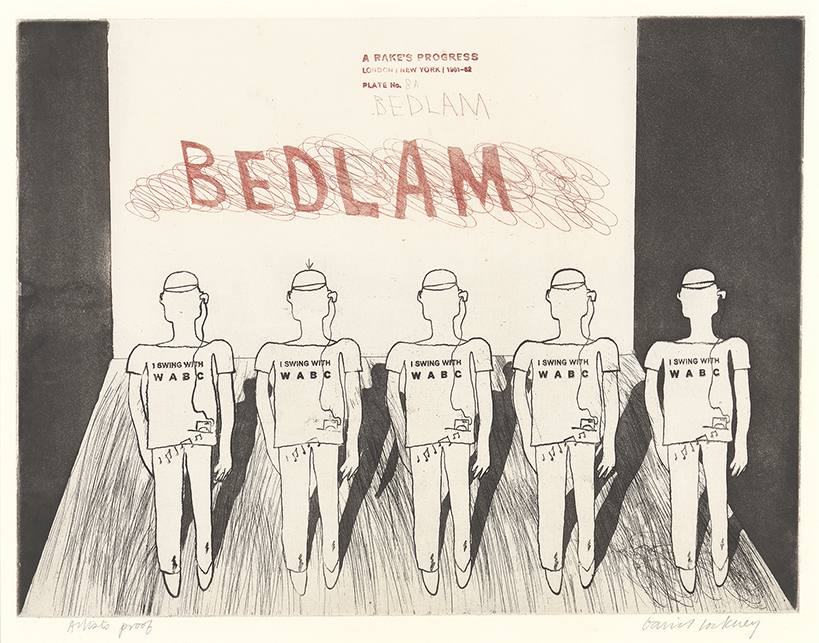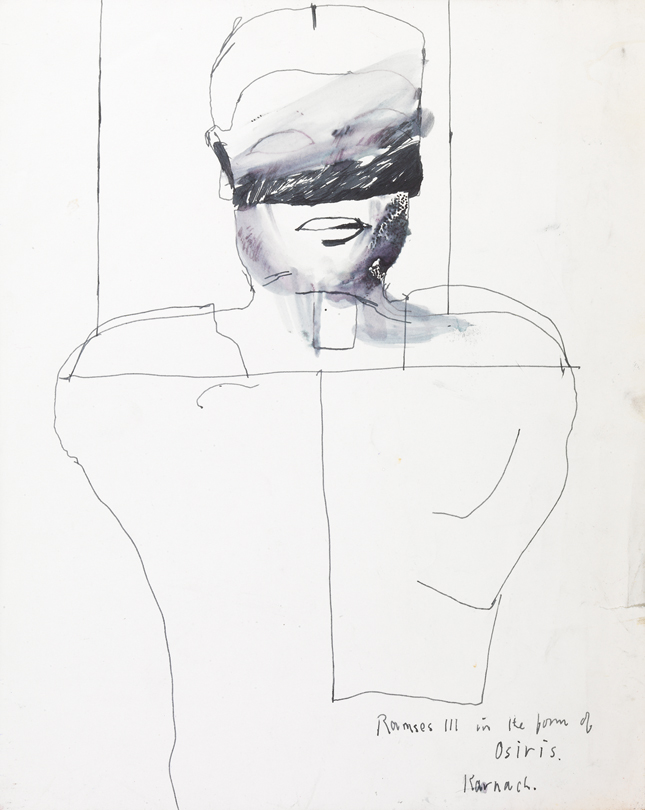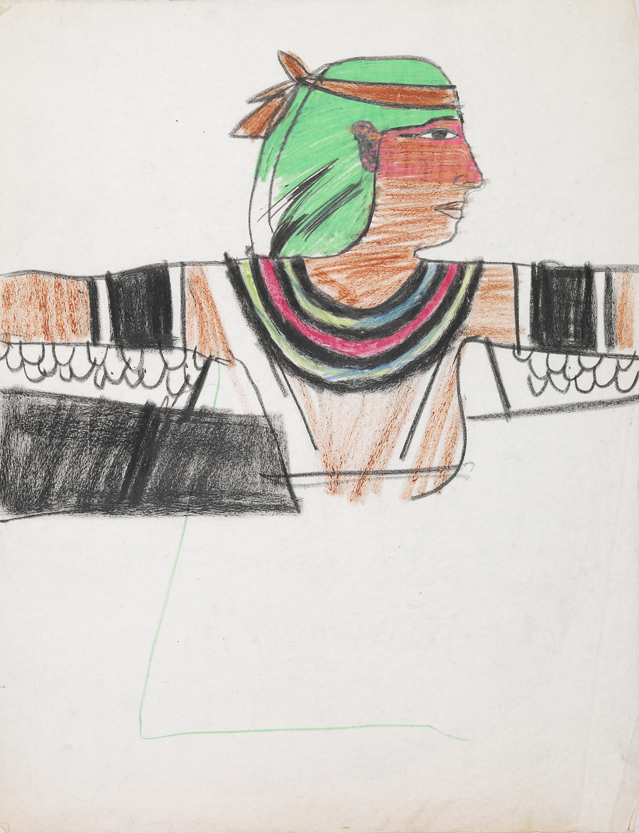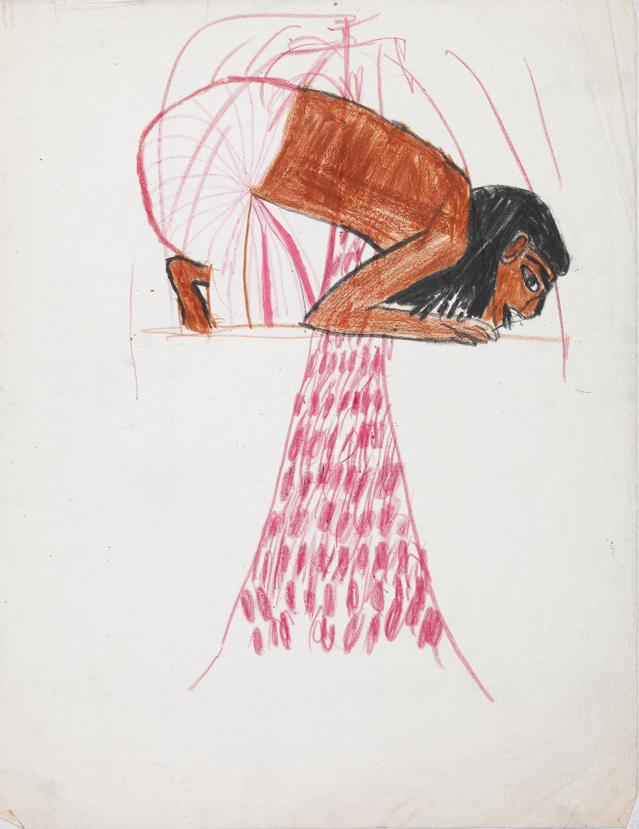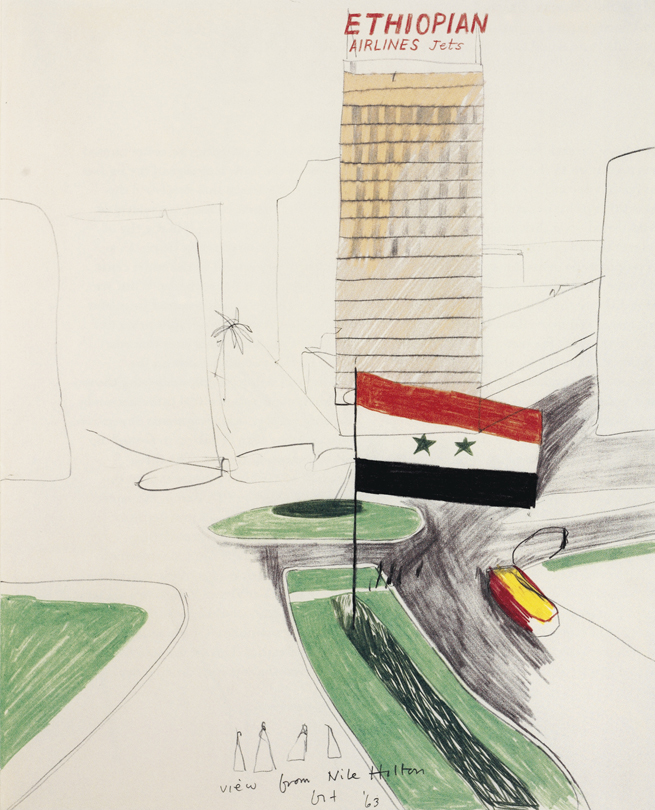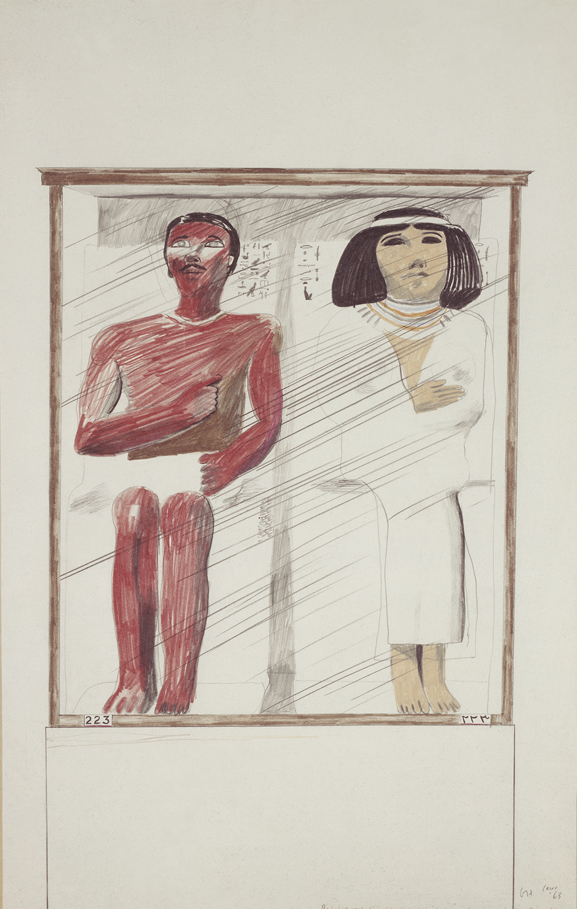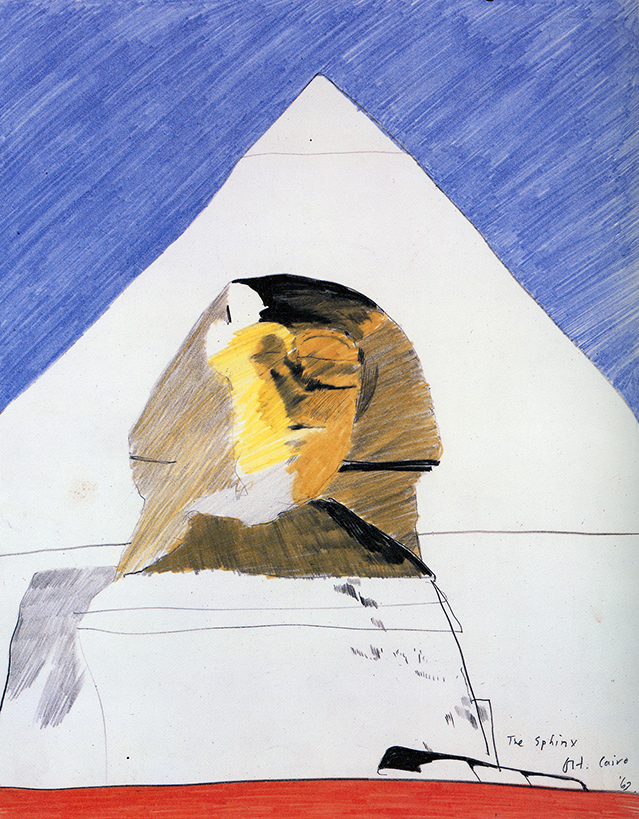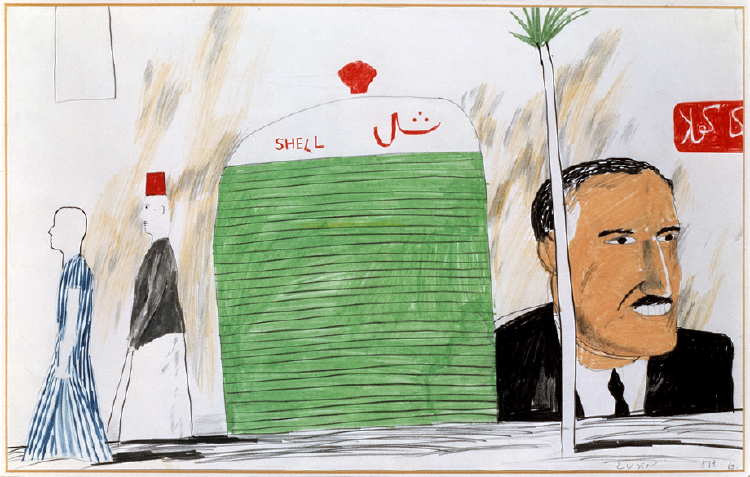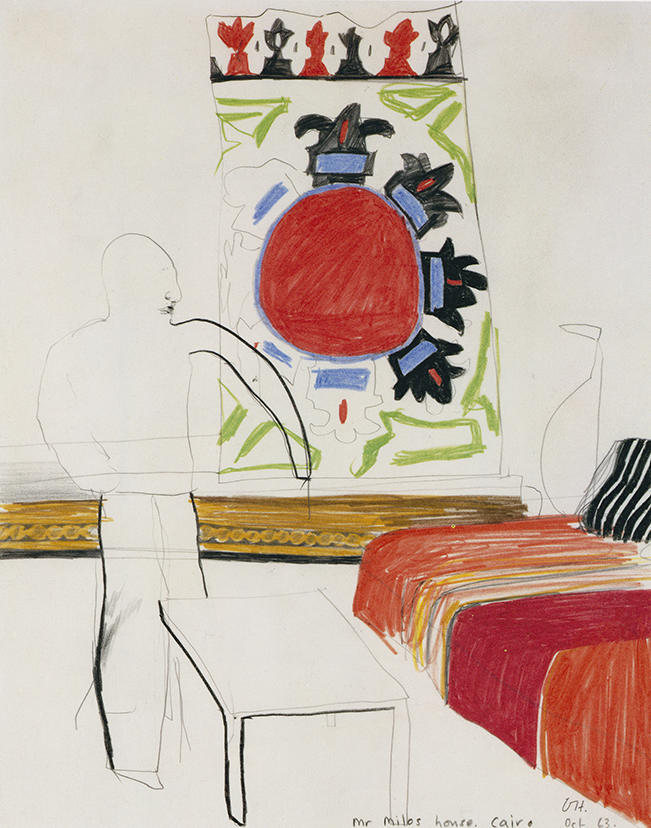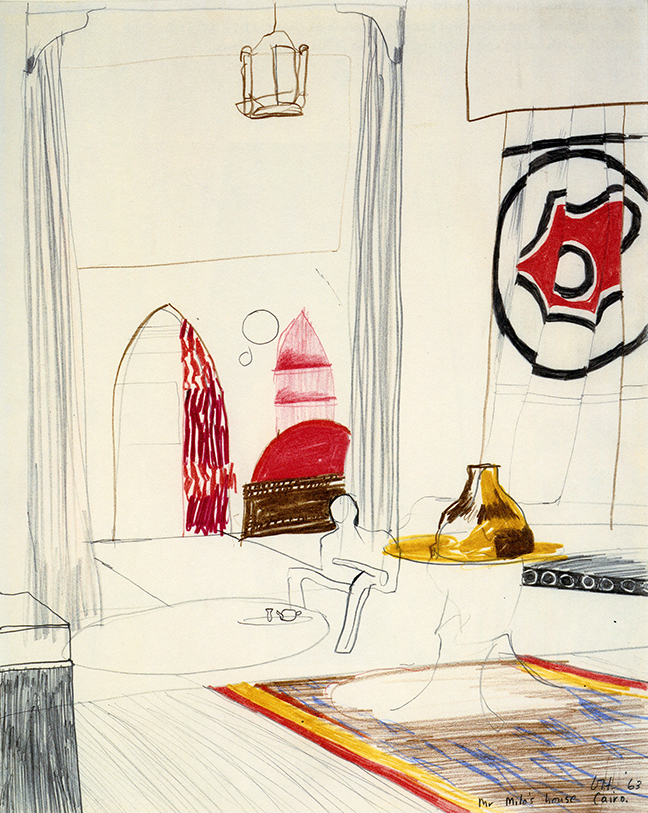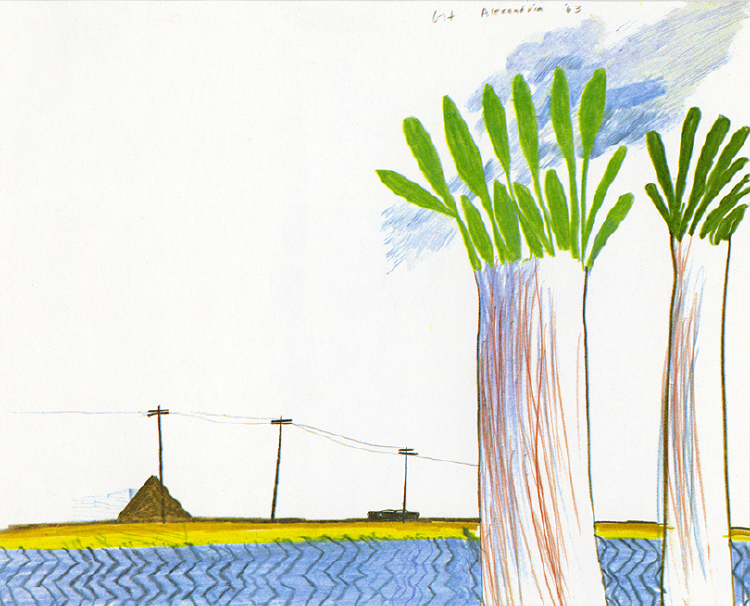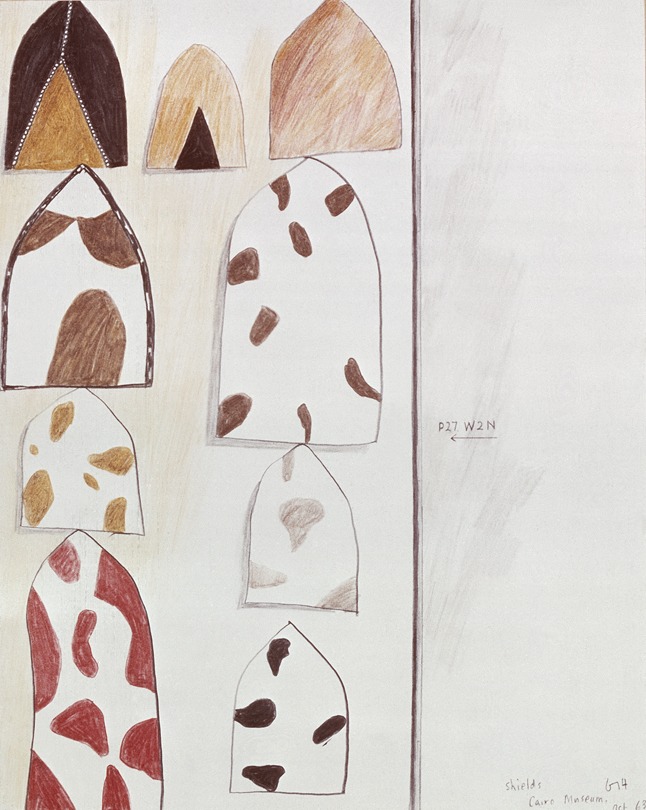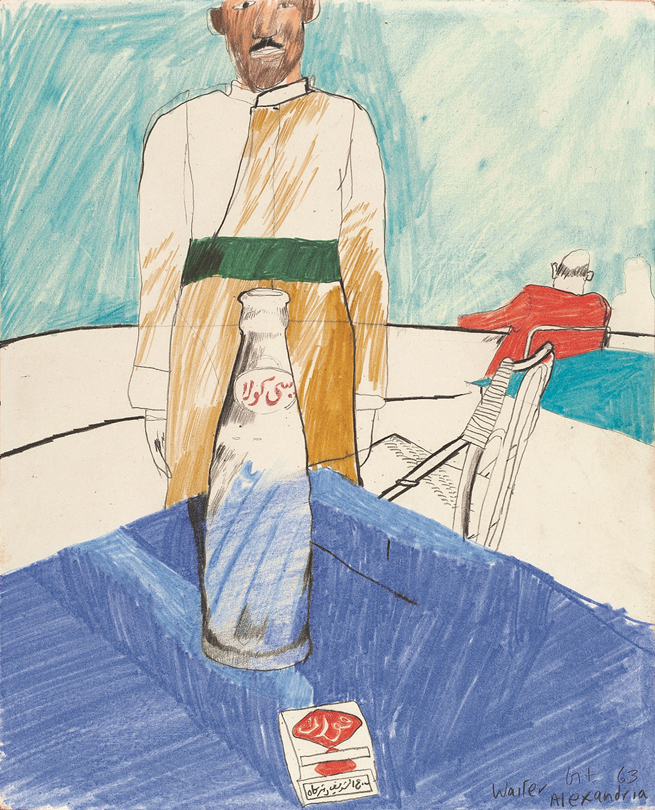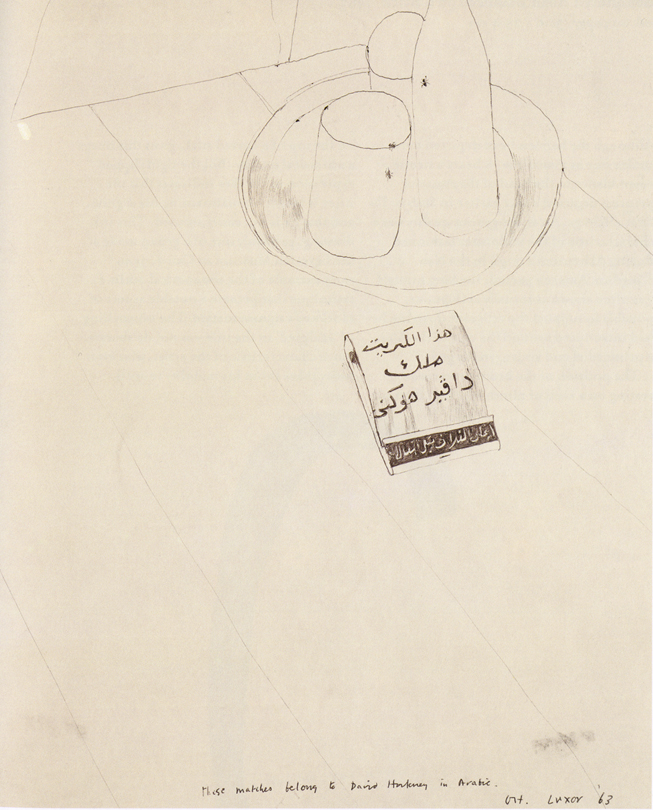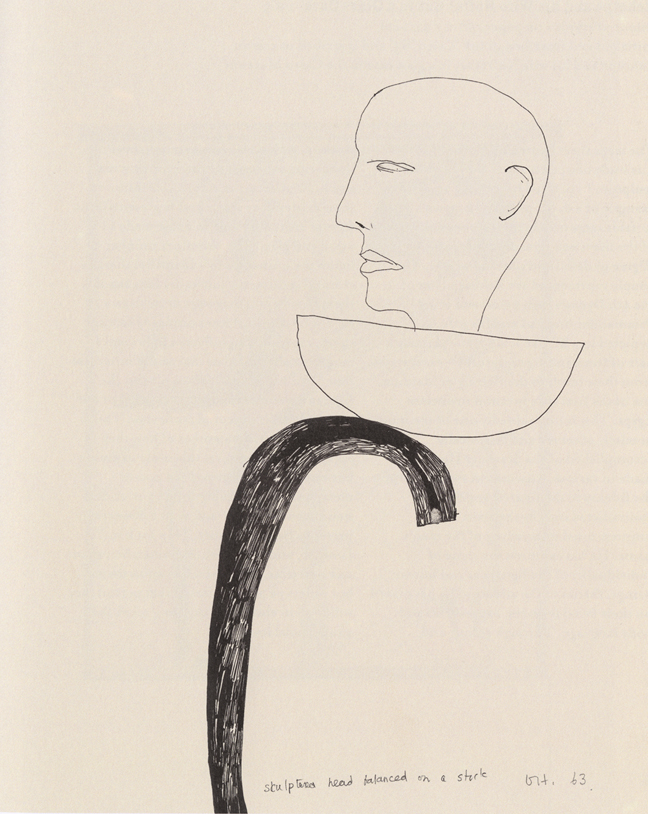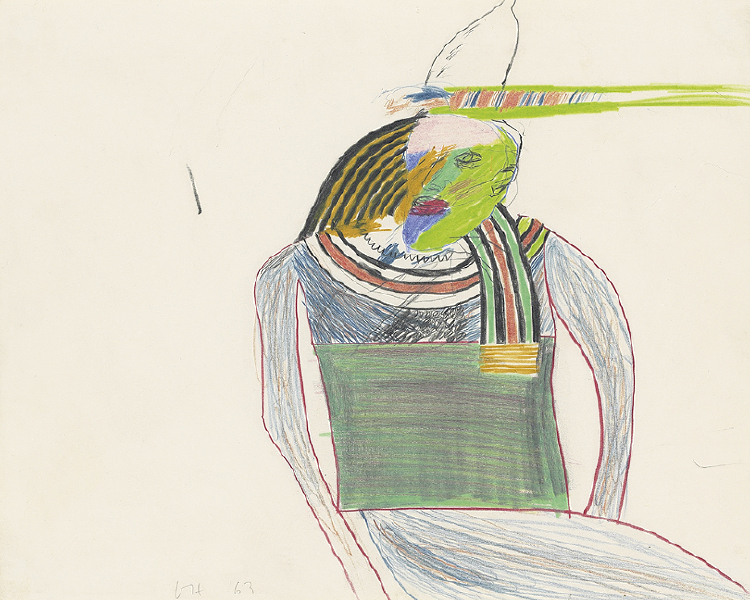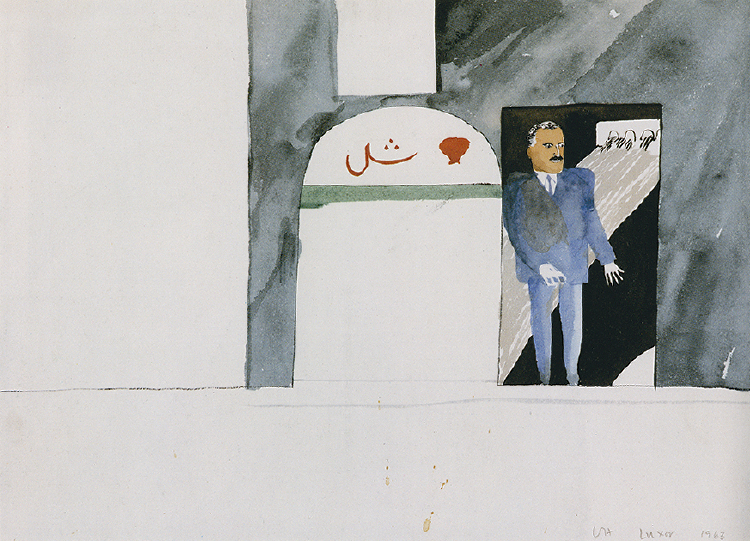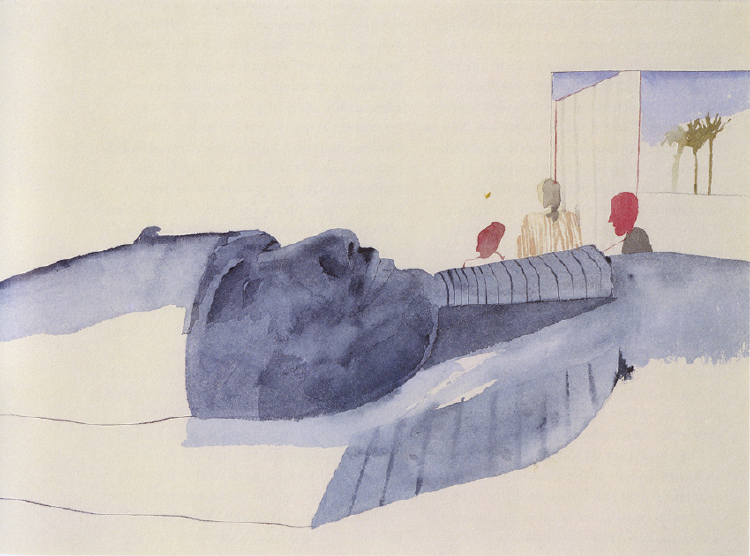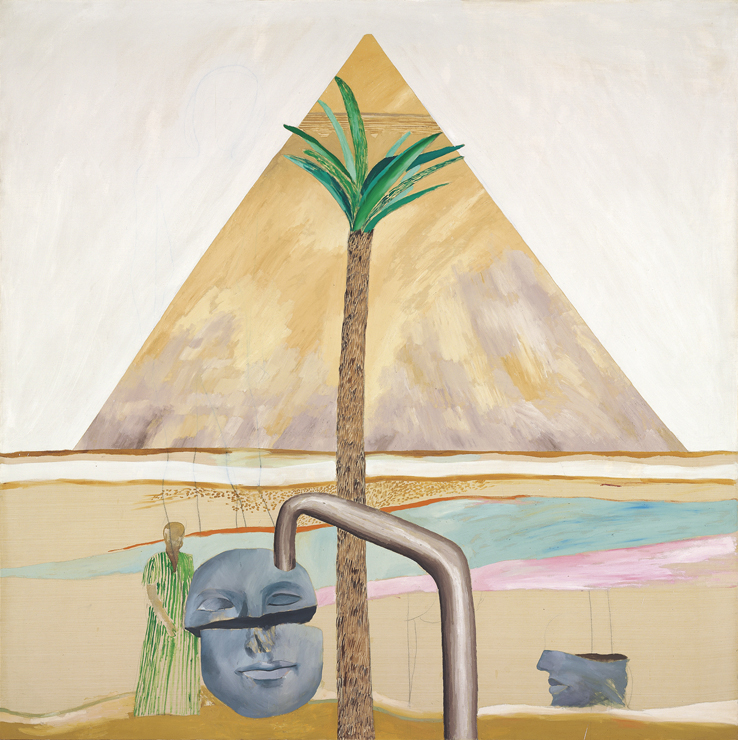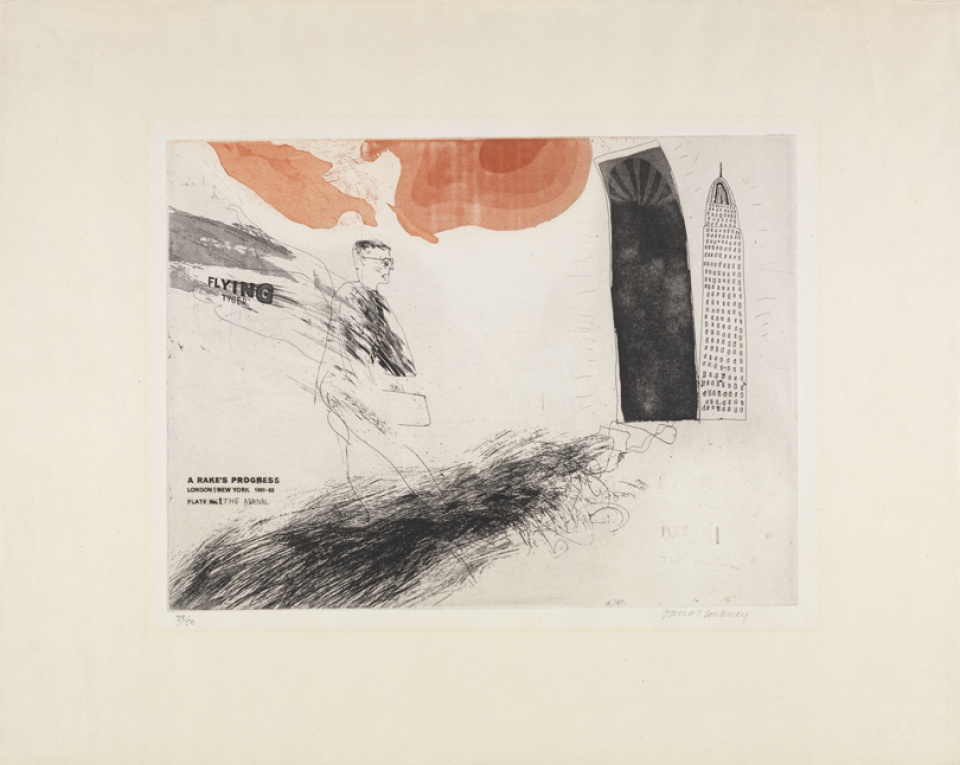
Paintings of couples
Hockney’s new paintings are delving further into the imagery of romantic and sexual intimacy, of couples observed in domestic interiors, or in shower scenes. Among these are: The Second Marriage, a shaped canvas suggesting a cube or boxed-in space, with seated bride and groom; [NESTED]Domestic Scene, Notting Hill, in which Hockney’s close friends Ossie Clark and Mo McDermott pose; and Domestic Scene, Los Angeles, based on a shot of two men found in the magazine Physique Pictorial (Hockney has not yet visited L.A.).
When you walk into a room, you don’t notice everything at once and, depending on your taste, there is a descending order in which you observe things. I assume alcoholics notice the booze first, or claustrophobics the height of the ceiling, and so on. Consequently, in Domestic Scene, Notting Hill I deliberately ignored the walls, and I didn’t paint the floor or anything I didn't consider important.
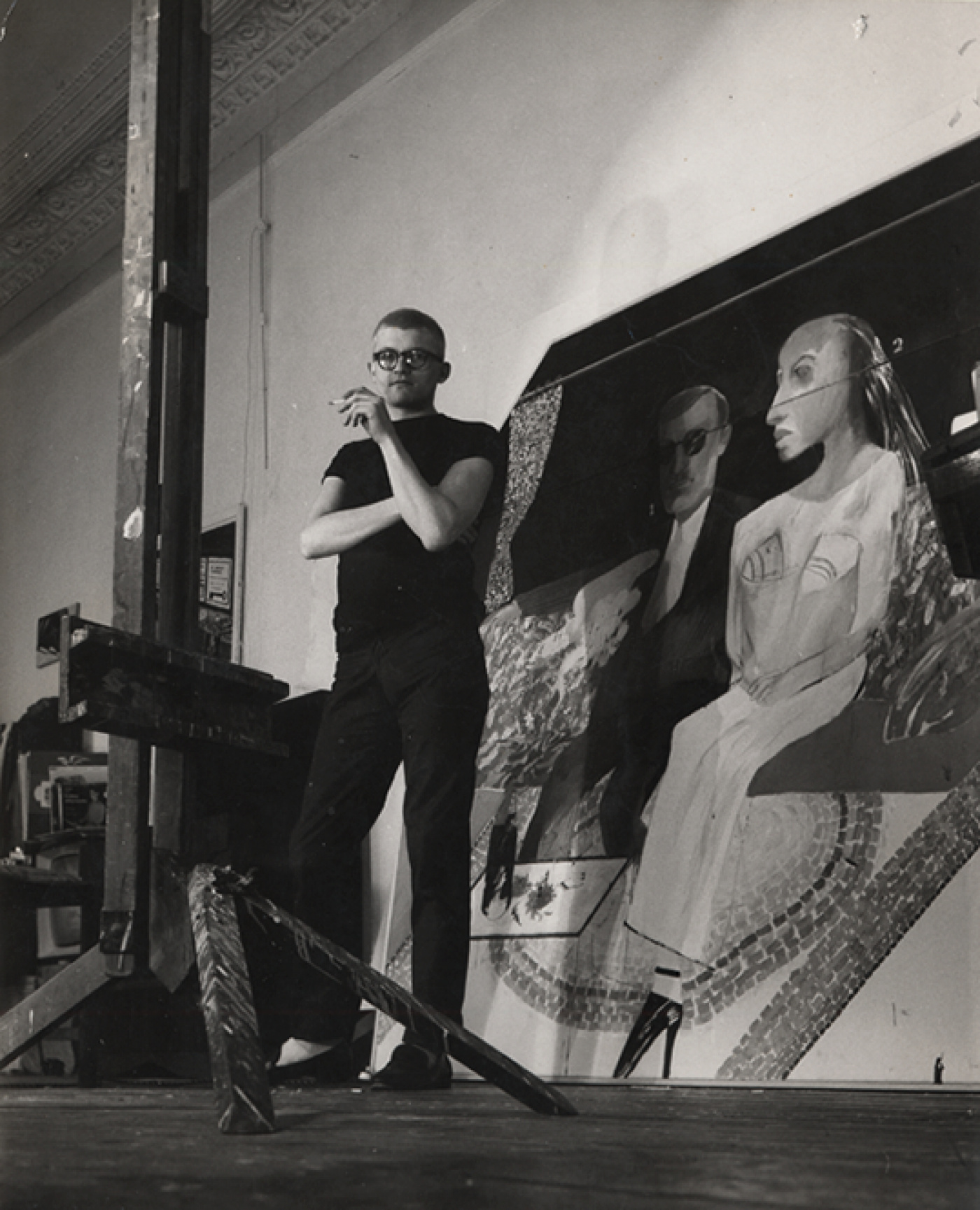
The great thing about showers is that you can see the body. The body is more visible in a shower, so it’s more interesting to watch somebody have a shower rather than take a bath, and that was the appeal, and of course the technical thing of painting water has always interested me, the whole subject of transparency.
Play within a Play
Hockney is also exploring the theme of pictorial illusion, strikingly in Play within a Play. Toying with the pictorial conceit perfected by the Baroque artist Domenichino (Italian, 1581–1641) of painting the image of a tapestry, Play within a Play shows Hockney’s dealer, John Kasmin, standing before a tapestry but[NESTED] behind a glass surface. He raises his hands against the glass, which seems to separate him from the viewer—as if he is caught on the other side, within the image itself.
Domenichino’s idea of a very shallow space with a picture on a tapestry that has illusion and you don’t know whether the illusion is real or not, you’re playing so many games, and they are visual .… The figure is a portrait of John Kasmin. Kas had always wanted me to paint him but I’d never got round to it as I couldn’t really decide how to do it. Now it seems appropriate to trap him in this small space between art and life.
A Rake’s Progress
After two years of work, Hockney completes A Rake’s Progress, and the sixteen etchings are published in an edition of 50 by Editions Alecto. In the Times, Bryan Robertson calls them “a total success: edgy placing of images, a fastidiously dry sense of the juxtaposition of black and white and a highly individual formal sense, wiry but not untender, drive home at a spanking pace the up-to-date whimsically autobiographical version of the Rake’s Progress morality tale, based here on the artist’s own escapades in America.” [NESTED]The influence of Hogarth will become increasingly significant with the 1975 production of Stravinsky’s The Rake’s Progress.
They sold the sets for 250 pounds each, and I didn’t dare tell people the price because it was so outrageous I was ashamed of it; I thought etchings should cost two or three pounds each; 250 pounds—madness! But with the money I realized I could go and live in California for a year.
Egypt for The Sunday Times
The Sunday Times commissions Hockney to travel to Egypt in October, where he makes numerous drawings for publication on November 24. They are never published due to the paper’s coverage of John F. Kennedy’s assassination days prior.
It was a marvelous three weeks. I didn’t take a camera, only drawing paper, so I drew everywhere and everything, the Pyramids, modern Egypt, it was terrific. I was very turned on by the place, and on your own you do a lot more work. I carried all my drawings everywhere and a lot of equipment, and I would get up very early in the morning. I loved the café life. Egyptians are very easy-going people, very humorous and pleasant, I liked them very much. It was a great adventure.
Pictures with People In
Hockney’s vision of Egypt—captured in a painting of the Great Pyramid at Giza made subsequently in his studio—debuts at his first solo exhibition at Kasmin’s gallery in London, David Hockney: Pictures with People In. His title for the show emphasizes his unique position on Kasmin’s roster as the only artist working with the figure. The critically acclaimed show sells out.
Second trip to New York
He takes off for New York at the end of the year. There, he meets Andy Warhol and Dennis Hopper, and begins what will become an enduring friendship with Henry [NESTED]Geldzahler, Curator of Twentieth-Century Art at the Metropolitan Museum of Art.

Henry [Geldzahler] and I got along instantly …. We shared a love of music, opera in particular, which I had started to go to a bit, upstairs at Covent Garden, and there was painting of course, and we became friends very quickly. He was very, very funny, very clever, and we had the same kind of taste. I thought we had a similar way of looking at life.
Exhibitions
Solo
- A Rake's Progress and Other Etchings, Editions Alecto Gallery, London, UK (Dec 3–24), travels to Lane Gallery, Bradford; Heffer Gallery, Cambridge; Prestons Art Gallery, Bolton (through 1964); catalogue.
- Pictures with People in, Kasmin Limited, London, UK (opens Dec 6, 1963); catalogue.
Group
- British Painting in the Sixties, Whitechapel Gallery, London, UK (Jun 1–30), travels to Zurich (Aug 29–Sep 14); Manchester; Glasgow; Hull; catalogue.
- Group Show, Kasmin Limited, London, UK (Jul 30–Sep 19).
- 118 Show, Kasmin Limited, London, UK (opens Aug 9, 1963).
- John Moores Exhibition, Walker Art Gallery, Liverpool, UK (Nov 14, 1963–Jan 12, 1964); catalogue.
Publications
Publications
- Britische Graphische Scene 1963, Orell Fussli Buchhandlung, Zurich.
- David Hockney, Pictures with People in, Kasmin Limited, London.
- Troisième Biennale de Paris, Musée d’art Moderne de La Ville de Paris, Paris.
